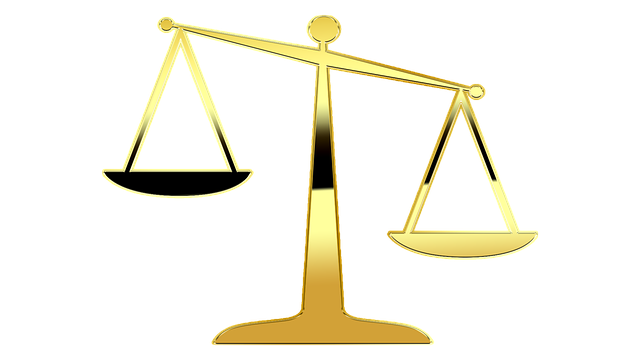The Settlement Process for Employment Law Cases offers a faster, more cost-effective alternative to court battles, resolving disputes through direct negotiations, mediation, or arbitration. This strategic approach addresses issues like discrimination and harassment, saving time and resources while maintaining confidentiality. By prioritizing effective communication and creative solutions, parties can achieve mutually satisfying outcomes, avoiding lengthy litigation and potential reputational damage. Alternative Dispute Resolution (ADR) methods streamline the process, fostering collaboration and tailored solutions for both corporate and individual clients.
“Unraveling various litigation types is crucial for navigating legal complexities, especially within the intricate realm of employment law. This comprehensive guide offers an in-depth look at different legal disputes, focusing on a critical aspect: the settlement process for employment law cases. From understanding diverse litigation forms to exploring alternative dispute resolution (ADR) methods, we provide a step-by-step approach for successful negotiations. Additionally, we delve into common challenges and strategic insights, equipping readers with essential knowledge for effective case management.”
- Understanding Different Types of Litigation: An Overview
- The Settlement Process: A Step-by-Step Guide for Employment Law Cases
- Common Challenges and Strategies in Employment Law Litigation
- Alternative Dispute Resolution (ADR) Methods: Benefits and Applications
Understanding Different Types of Litigation: An Overview

Litigation comes in various forms, each with distinct characteristics and outcomes. Understanding these types is crucial for anyone navigating legal disputes, especially within the complex realm of employment law. One common path is the settlement process, which offers a more efficient and often less contentious alternative to lengthy court battles. This approach encourages parties to reach an agreement outside of the judicial system, saving time and resources.
The settlement process for employment law cases can take many forms, from direct negotiations between employees and employers to mediation facilitated by neutral third parties. These methods aim to resolve issues such as discrimination, harassment, or unfair termination, addressing the needs of not only individual plaintiffs but also respective business interests. While some cases may still progress to jury trials, where a group of citizens decides the outcome, many are successfully resolved through these alternative dispute resolution mechanisms, fostering a more harmonious relationship between philanthropic and political communities.
The Settlement Process: A Step-by-Step Guide for Employment Law Cases

The Settlement Process for Employment Law Cases is a strategic approach designed to resolve disputes outside of court, offering a more efficient and cost-effective alternative. This process involves several steps, each crucial in reaching a mutually agreeable outcome.
It begins with identifying potential issues and evaluating the respective business’s legal position. Next, parties involved engage in negotiations, aiming for a settlement that addresses the underlying claims. In employment law cases, this often involves discussing financial compensation, job reinstatement, or both. The key to a successful settlement is adaptability; lawyers must be prepared to explore creative solutions, especially when dealing with white-collar defense and winning challenging defense verdicts. Effective communication and a willingness to compromise are essential throughout the process.
Common Challenges and Strategies in Employment Law Litigation

Employment law litigation presents a unique set of challenges for both employers and employees. One of the primary hurdles is navigating complex legal frameworks that cover issues like discrimination, harassment, and unfair labor practices. Given the sensitive nature of such cases, maintaining confidentiality while ensuring a thorough investigation is crucial to mitigating potential reputational damage.
Strategizing for these cases often involves a combination of early settlement negotiations to avoid prolonged litigation and public scrutiny, leveraging an unprecedented track record of achieving extraordinary results through robust legal arguments, and employing expert witnesses to strengthen claims or defenses. Understanding the nuances of employment laws and effectively communicating them in court are key to avoiding indictment and fostering a culture of fair labor practices.
Alternative Dispute Resolution (ADR) Methods: Benefits and Applications

Alternative Dispute Resolution (ADR) methods offer a more efficient, cost-effective, and mutually agreeable way to resolve conflicts compared to traditional litigation. These processes include mediation, arbitration, and negotiation, providing a range of options for both corporate and individual clients navigating employment law cases. ADR can significantly streamline the settlement process, enabling parties to reach agreements without lengthy court battles.
One of the key advantages is that it fosters collaboration, allowing for more creative solutions tailored to the unique needs of each case. Unlike litigation, where the focus is often on winning challenging defense verdicts, ADR prioritizes reaching a resolution that satisfies both sides. This approach can lead to a complete dismissal of all charges, providing a favorable outcome for all involved and potentially reducing legal costs significantly.
In navigating the complex landscape of litigation, especially within the realm of employment law, understanding various types of dispute resolution is paramount. This article has provided an overview of different litigation approaches, with a specific focus on the settlement process for employment law cases. By exploring common challenges and delving into alternative dispute resolution (ADR) methods, professionals can enhance their strategies and foster more efficient, cost-effective outcomes. Remember that, in today’s legal landscape, successfully managing these processes is a game changer, ensuring justice and fairness for all parties involved.






